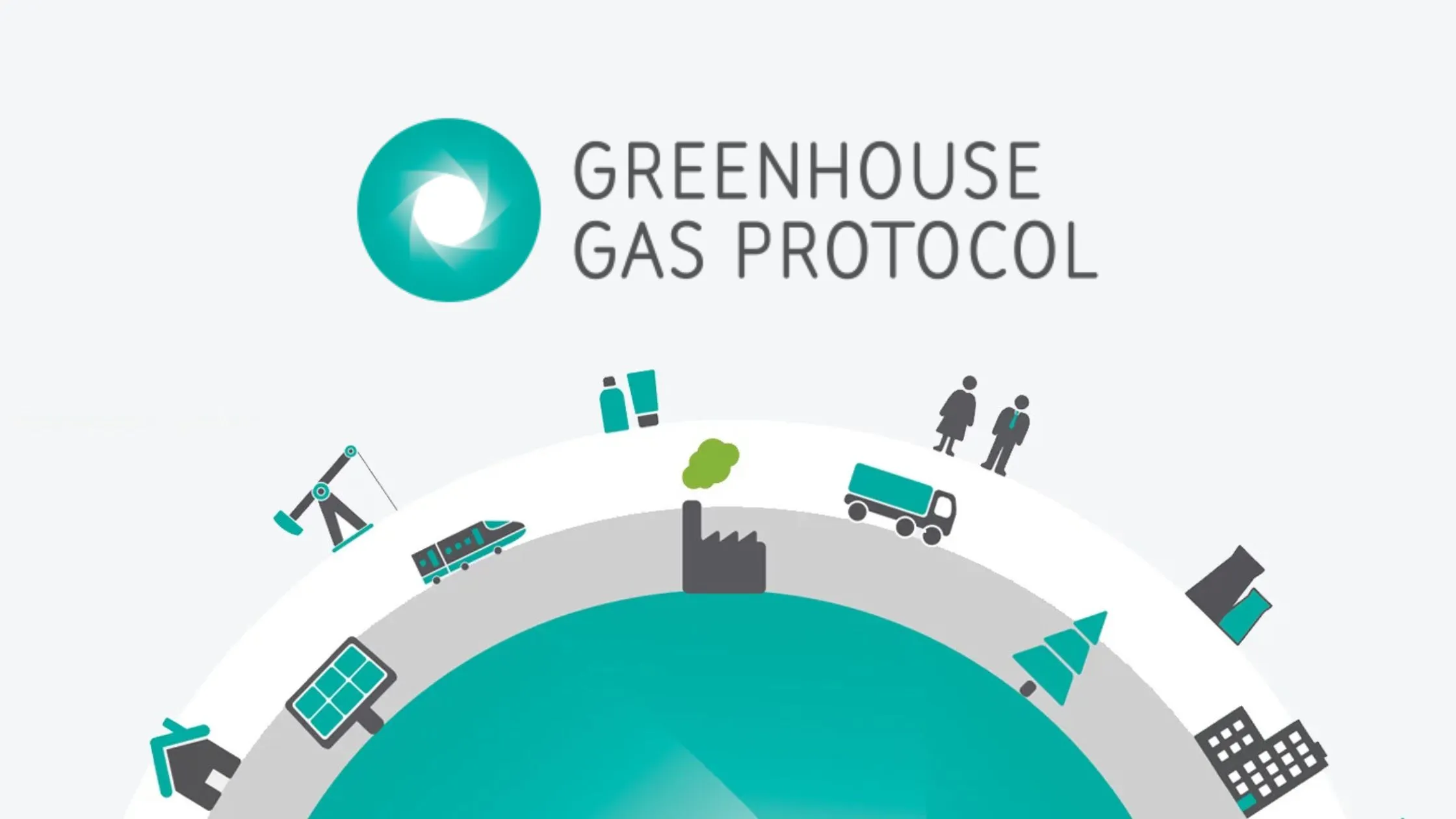FAQ – Scope 2 Market-Based Updates

In recent weeks, a number of organizations and individuals have raised questions about the direction of the Scope 2 update process, particularly around proposals to increase the accounting granularity. Many of these concerns appear to stem from misinterpretation of what is actually being proposed.
In a recent blog, we detailed why these updates to the Scope 2 market-based method are both necessary to improve the credibility and impact of market-based accounting, as well as how they are feasible to implement. In this follow-up blog, we provide responses to a list of frequently asked questions.
— Is this forcing buyers to do 100% hourly matching, i.e. 24/7 carbon-free energy (CFE)?
No. The proposed updates to the GHGP Scope 2 market-based are about improving the accuracy of inventory emissions by more closely aligning them with the physical and market realities of electricity systems. GHGP is not a target-setting body, and does not require companies to set any particular targets for their procurement. For companies that set targets based on their market-based inventory, they may set goals that are less than 100% hourly matched (which studies have found can be just as cost-effective as 100% annual goals). Companies can continue to pursue procurement strategies that best suit their organizations (e.g., annual matching, hourly matching, emissions matching), but they would report their market-based inventory emissions based on the updated standard. This increases the credibility and comparability of inventory emissions claims.
— Won’t forcing small businesses to do hourly accounting reduce participation?
The proposed update ensures that most small businesses would not be required to do hourly accounting. It would allow companies with consumption below a threshold (e.g., 5-10 GWh in a given region) to continue to do annual accounting. Data from CDP shows that a small number of companies consume the vast majority of electricity. A recent CDP company disclosure report states that “A subset of only 7% of these companies accounts for more than 76% of the electricity purchasing”. Based on an analysis of CDP data, about 38% of companies reporting to CDP consume less than 10 GWh per year globally. Therefore, a regional exemption up to a load threshold (e.g., 5-10 GWh) would allow many small businesses to continue to do annual or monthly accounting. Moreover, it is to be expected that in the transition period towards the standard’s implementation, both software tools for granular accounting and hourly-matched CFE products of electricity suppliers will become increasingly available, further facilitating hourly accounting for businesses of all sizes.
— Isn’t hourly accounting very difficult?
No. Hourly accounting simply means collecting (or estimating) hourly electricity consumption data, collecting hourly data from purchased clean energy, and comparing them. This process of balancing supply and load on a (sub)hourly basis is fundamental to the operation of power markets around the world. This accounting can be done today in spreadsheets, as illustrated by the template spreadsheet here that companies can use. Moreover, many service providers exist that help automate this process for companies. Examples include: Atmen, Blok-Z, Flexidao, Granular Energy, LevelTen Energy, Powerledger, Renewabl, and others. Finally, any company with a PPA in a deliverable grid will easily be able to account for it hourly, by using the hourly rather than annual aggregate generation data.
— Won’t these requirements stop voluntary procurement due to their cost?
No. The most credible studies of the costs and impacts of hourly matching (e.g., Princeton, TU Berlin, IEA) show that buyers can procure 80-95% hourly matched clean energy at costs that are comparable to annual matching today, while 100% hourly matching comes at a premium. A recent study focused on India found that 70% hourly matching can be achieved more cheaply than 100% annual matching, while having a greater decarbonization impact and significant cost savings (up to 1 billion USD) for the electricity system. In other words, companies do not need to achieve 100% hourly matching to have a significant impact. Moreover, as mentioned above, the proposed revisions do not force companies to set any particular procurement targets or voluntary procurement strategies, but rather to account for their emissions more accurately.
— How many companies are engaged in hourly matching today?
Many. Here is a non-exhaustive list of hourly matching across the globe: A2A, Acciona, AES, AM Green, Brook Green Energy, Brookfield Properties, Catalyst Power, Chiang Mai University, Constellation, Drax, Digital Realty, D-Sharing, Ecotricity, EdgeConnex, Einstein Bros. Bagels, ekWateur, Engie, Entergy Arkansas, Georgia Power, Good Energy, Google, Greenko, Ingka Group, Iron Mountain, Jera, JP Morgan Chase, Mercedes Benz, Microsoft, npower Business Solutions, Octopus Energy, Peninsula Clean Energy, PPC, Quinbrook Infrastructure Partners, Rio Tinto, Sembcorp, Shandong Luneng Group, Smartest Energy, Sol Systems, SSE, Statkraft, Svea Solar, TotalEnergies, UBS, Vattenfall.
— Will this make it harder for companies to report zero market-based emissions?
Yes, but getting to fully zero emissions is hard. Today’s standard allows companies to claim to have zero emissions on paper, while still relying on fossil power on their local grid to serve their consumption. A more accurate accounting system must stop assuming that solar generation is consumed at night, that electricity generated on faraway, disconnected grids is consumed where a company operates, or that a portfolio of clean energy resources is not needed to fully match supply and demand reliably and affordably. Updated Scope 2 market-based accounting is intended to provide a more accurate measure of progress towards the decarbonization of electricity use. The proposed update makes carbon accounting more accurate and transparent, while highlighting where more investments are needed, providing opportunities for clean energy, and flexibility that are often neglected today.
— Is hourly matching realistic for buyers of different sizes?
Many organizations of all sizes are already doing clean energy hourly matching across five continents with millions of MWh. Large companies like Google, Microsoft, and Iron Mountain already have hourly matching goals, but smaller companies are doing this too. For example, GoodEnergy, a UK Energy supplier, is enabling hourly matching for its business customers, and Einstein Bagels is also doing hourly matching in the US. In addition, utilities and power suppliers, by necessity, have been doing hourly matching of deliverable energy for decades, and can play an increasingly important role by making hourly-matched products and green tariffs available for their customers of all sizes.
A non-exhaustive list of utilities and energy suppliers offering hourly matching products around the world includes: A2A, Acciona, AES, Catalyst Power, Constellation, Duke Energy, Engie, Entergy Arkansas, Georgia Power, Good Energy, Greenko, Jera, Octopus Energy, Sembcorp, Sol Systems, SSE, Statkraft, TotalEnergies, Vattenfall, and more.
— Won’t these requirements slow the pace of voluntary procurement?
It’s likely that the opposite is true. Many companies already claim 100% clean energy consumption based on the existing standard, and according to RE100, over 60% of their members have 100% (annually-matched) renewable electricity targets on or before 2030. Once these companies reach their current goals and claim “mission accomplished” (i.e., the use of 100% clean energy and zero Scope 2 market-based emissions), they will have little incentive to do more, even as they continue to physically rely on carbon-intensive electricity. A more accurate Scope 2 standard that requires deliverable, hourly-matched clean energy procurement for market-based claims would incentivize continued investment past 2030 from these leading companies. If the existing standard remained in place, it is possible that we could see a slowdown in voluntary clean energy investment after 2030 once all of these current goals are met.
— Is hourly data widely available?
Yes. Hourly generation and consumption data are widely available today, as it is the basis for the operation of electricity markets and billing of electricity consumers. Without hourly data, large generators would not get paid for the power they produce, and large consumers would not know if they are being billed properly. This is especially true for the larger loads that would be required to do hourly accounting under the proposal. This systematic report of granular electricity data availability finds that even today, “in most industrialized regions, granular consumption meter data is mostly available and accessible.” And, in cases where hourly data is not easily accessible, profiles of monthly or annual data can be used to ensure feasibility without losing integrity.
— How can a company do hourly accounting if they don’t have access to hourly electricity data?
There are flexible options. If a company doesn’t have access to hourly meter data, they can turn annual or monthly electricity data into hourly data by using load profile estimates, based on the proposed load profile hierarchy. There are multiple proposed options for how to do this. A company could use building or industry-specific load profiles, such as those used by electric utilities for billing for many years. Even easier, they could calculate a flat hourly load profile by dividing their monthly electricity consumption by the number of hours in the month. While using actual hourly electricity data is ideal, using a flat hourly load profile would still significantly improve the accuracy of Scope 2 market-based inventories.
— Isn’t this proposal prioritizing technical ambition over practical feasibility?
No. This proposal improves Scope 2 market-based inventory accounting based on the GHGP’s decision-making hierarchy, which prioritizes scientific integrity and impact. However, feasibility is also top of mind for the Scope 2 TWG, and the proposal includes a number of accommodations to ensure feasible implementation of the new standard (such as exemptions for smaller loads, the use of profiles to estimate hourly data, phase-in periods for the new rules, and crediting for legacy clean energy contracts).
— Will I be able to count my existing procurements?
Likely yes. In recent voting, the TWG strongly supported the concept of allowing “legacy” long-term contracts signed before the update of the Scope 2 guidance to be included in a company’s market-based reporting. However, to ensure robust implementation, a number of conditions will have to be met, and these are still being discussed.
— Won’t tighter market boundaries limit investments?
No. Tighter market boundaries will direct clean energy investments where it’s most needed to supply consumption, and other metrics can be used to estimate impacts separate from the market-based inventory associated with company actions taken outside or within their market boundary. Today, the US and Europe have broad market boundaries, which have led to heavy concentration of procurement in certain regions where renewables are cheapest and easiest to permit, not where they are needed to serve a company’s demand. Based on BNEF PPA data, Texas makes up about 40% of total PPA capacity signed in the US since 2000, while having a significantly lower share of commercial and industrial load and being poorly interconnected to the rest of the US. Deliverable market boundaries encourage companies to invest in clean energy where they consume power for their operations.
The proposed market boundaries define where clean energy claims are considered deliverable, in order to better reflect real flows of electricity on grids and ensure reasonable alignment between electricity consumption and generation. These revisions aim to harmonize accounting with actual grid flows and clarify the distinction between inventory data and broader emissions impact assessments. A TWG subgroup is developing a complementary framework for estimating the emissions impact of procurement actions, enabling companies to make non-inventory claims related to avoided emissions, including supporting clean energy in developing regions or taking climate actions outside their market boundary when their local supply options are limited.
— Are tighter market boundaries still too big to be credible?
Market boundaries should better align with electricity markets while remaining practical enough to encourage broad participation. Defining market boundaries requires a balance of integrity and feasibility. Some argue the proposed market boundaries are too large to reflect all transmission constraints. At the same time, some say they’re too narrow to support aggregation or recognize broader trading benefits. In fact, these boundaries strike a balanced, practical approach: they better align with how electricity is actually traded and avoid the overly broad definitions used today that allow clean energy claims disconnected from grid realities. The proposal strengthens deliverability criteria relative to the current method to ensure claims are more credible, yet feasible to implement.
— Will changing the rules lead to fewer long-term contracts?
No, the new proposed rules could encourage more long-term contracts. Companies sign long-term PPAs to benefit from stable and competitive electricity prices as well as to meet clean energy sustainability goals. Aligning PPA production and consumption on an hourly and local basis improves the value of PPAs to corporate consumers as it generates power they can actually use in their operations. This also provides a greater price hedging benefit compared to PPAs in grids where a consumer has no consumption, which provides little hedge value and leaves consumers fully exposed to volatile market price risks for power they don’t need for their operations. In any case, today’s Scope 2 rules do not favor long-term contracts. Among RE100 companies, PPAs comprise only 27% of renewable energy procurement, with unbundled EACs comprising the greatest share. In addition, the Scope 2 proposal includes a new incentive for companies to sign long-term contracts to estimate the marginal emissions impact of their procurement actions.
— Does this require each company to act like an island?
No. Some have argued that requiring companies to procure the full set of resources necessary to match their own demand — as if they were the only consumer on the grid — is inefficient. But the proposed standard does not require this. Companies can continue to procure much of the power they need via long-term contracts, but they can also purchase certificates when their own portfolio is short or sell certificates when they have excess.
Granular certificate trading platforms are already being set up, and studies have shown that pooling and trading procured clean generation certificates in this way reduces the cost of hourly CFE matching for companies. Like today, electricity suppliers can create supply portfolios and aggregate customer demands to more efficiently supply the demand and production profiles of many customers and generators. The proposed accounting standard is intended to encourage suppliers to develop clean products and companies to procure deliverable clean power in each hour while also considering reliability and affordability of electricity supply.
— Will companies get credit for what is already on the grid?
Yes, but with some modifications to bolster scientific integrity. The proposal clarifies how to account for electricity from publicly funded, mandated, or shared resources such as those delivered through default utility service or government clean energy programs. It limits a company’s claims to a fair and proportionate allocation of CFE resources that a company is required to support and disincentivizes shuffling of these shared CFE generation resources (e.g., public or regulated hydro or nuclear) to support exclusive voluntary claims. The proposal no longer allows the use of location-based, average emissions factors (which include clean energy that could be claimed by others) for unmatched consumption in market-based accounting. Instead, in the absence of supplier-specific emissions factors, companies would use residual mix factors or fossil-only emission rates to avoid double-counting of clean energy and claiming clean energy to which a company has no contractual link.
— Does the proposed update lead to double-counting of clean energy?
No. Some have claimed that the proposed updates would lead to double or triple counting of clean energy. This is false. The proposed updates by the TWG include provisions (e.g., defaulting to residual or fossil only mix rather than grid average mix) that help ensure that clean energy is not counted more than once.
Co-signers
TWG members participate in the Scope 2 update process in their personal capacity, so the views expressed here are their own and not necessarily those of their organizations.
Simone Accornero
Pete Budden
Killian Daly
Neil Fisher
Erik Landry
Lissy Langer
Greg Miller
Wilson Ricks
Alexandra Styles







